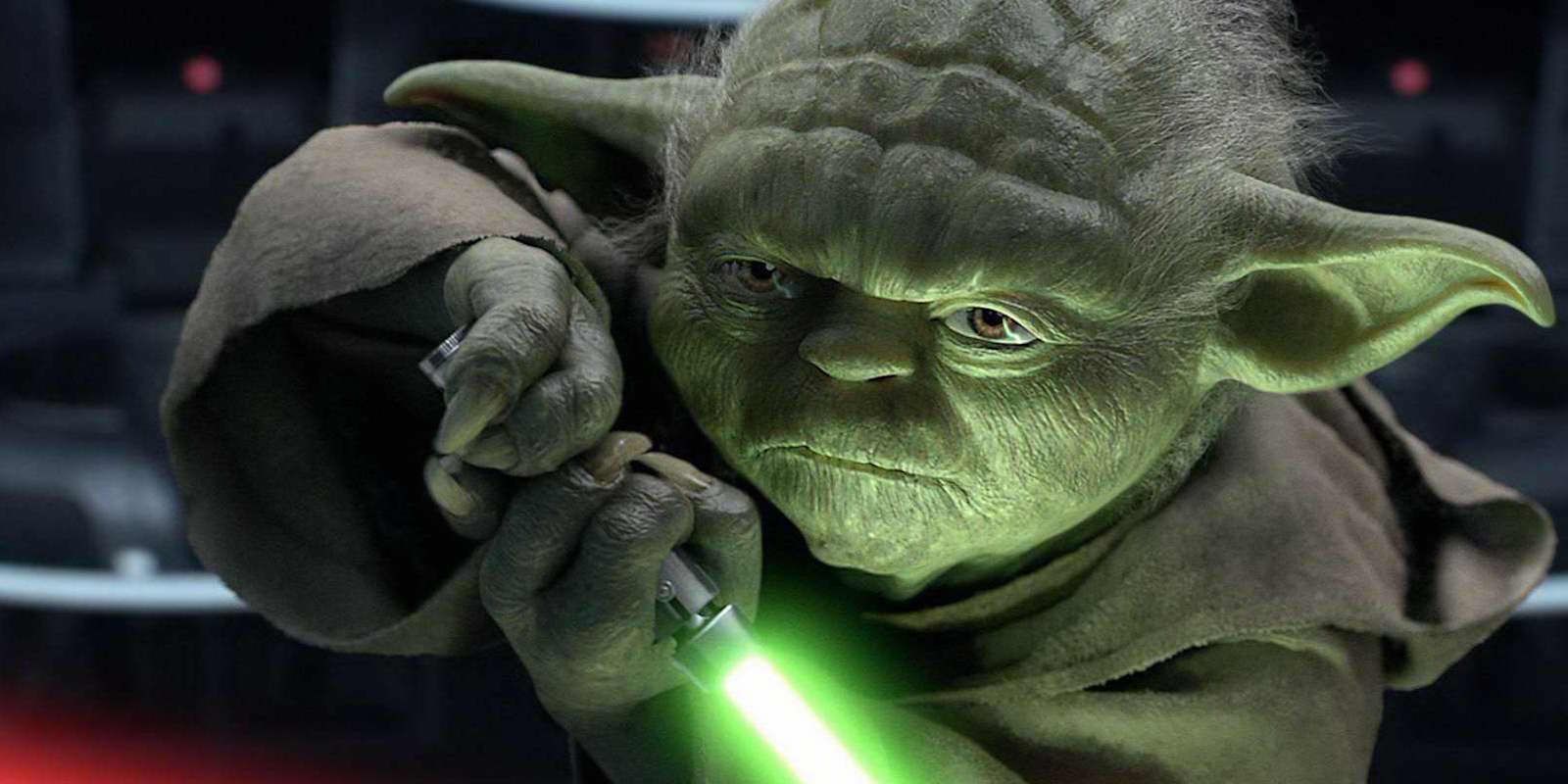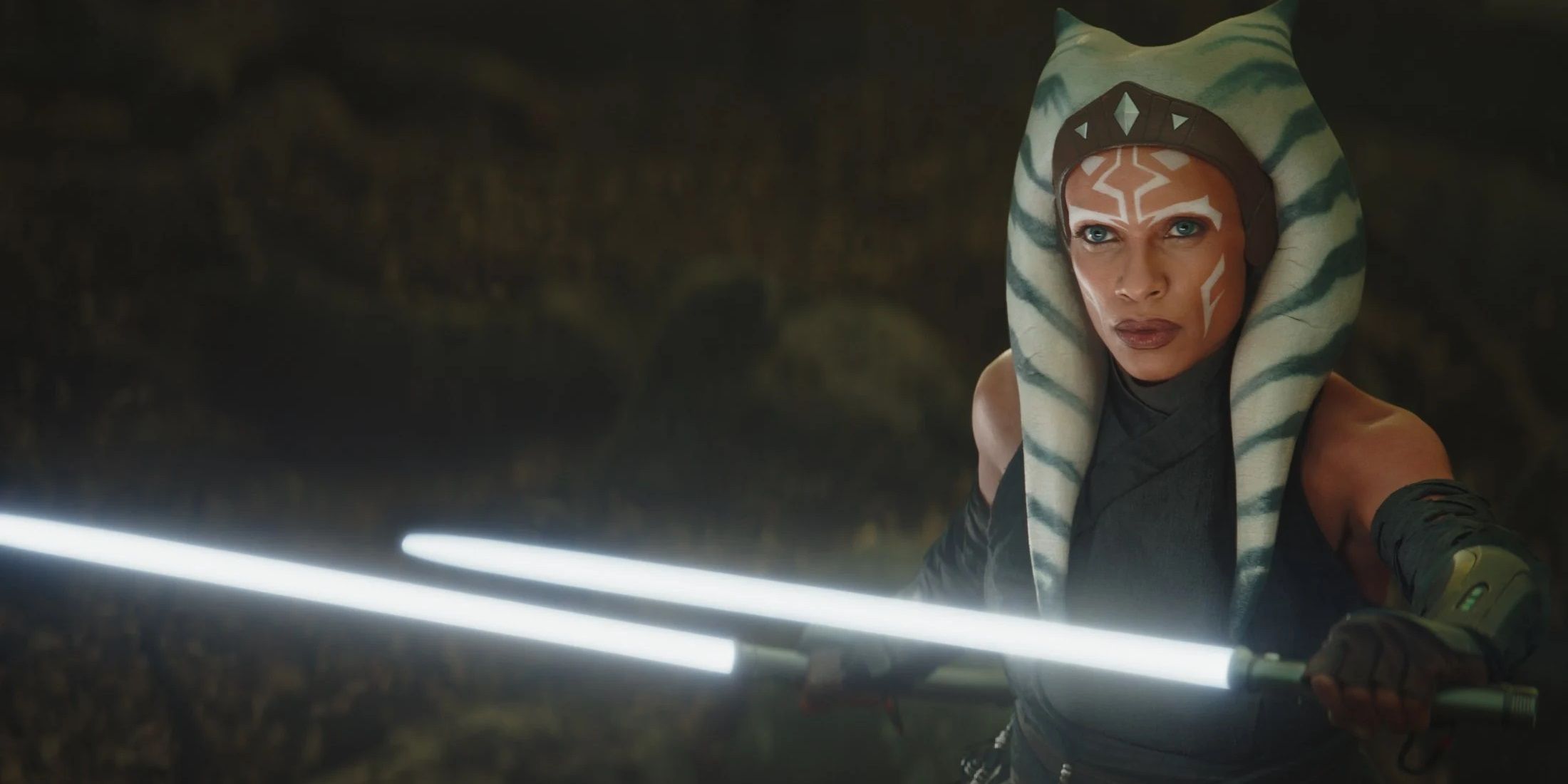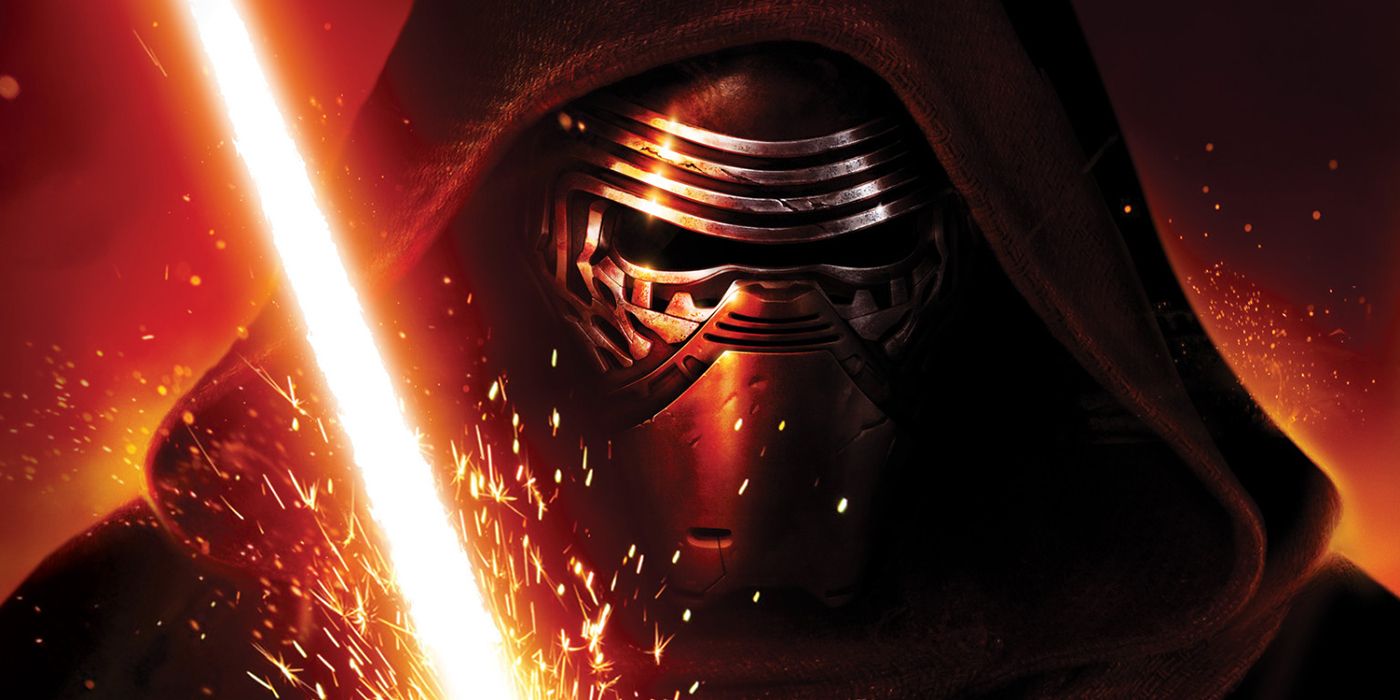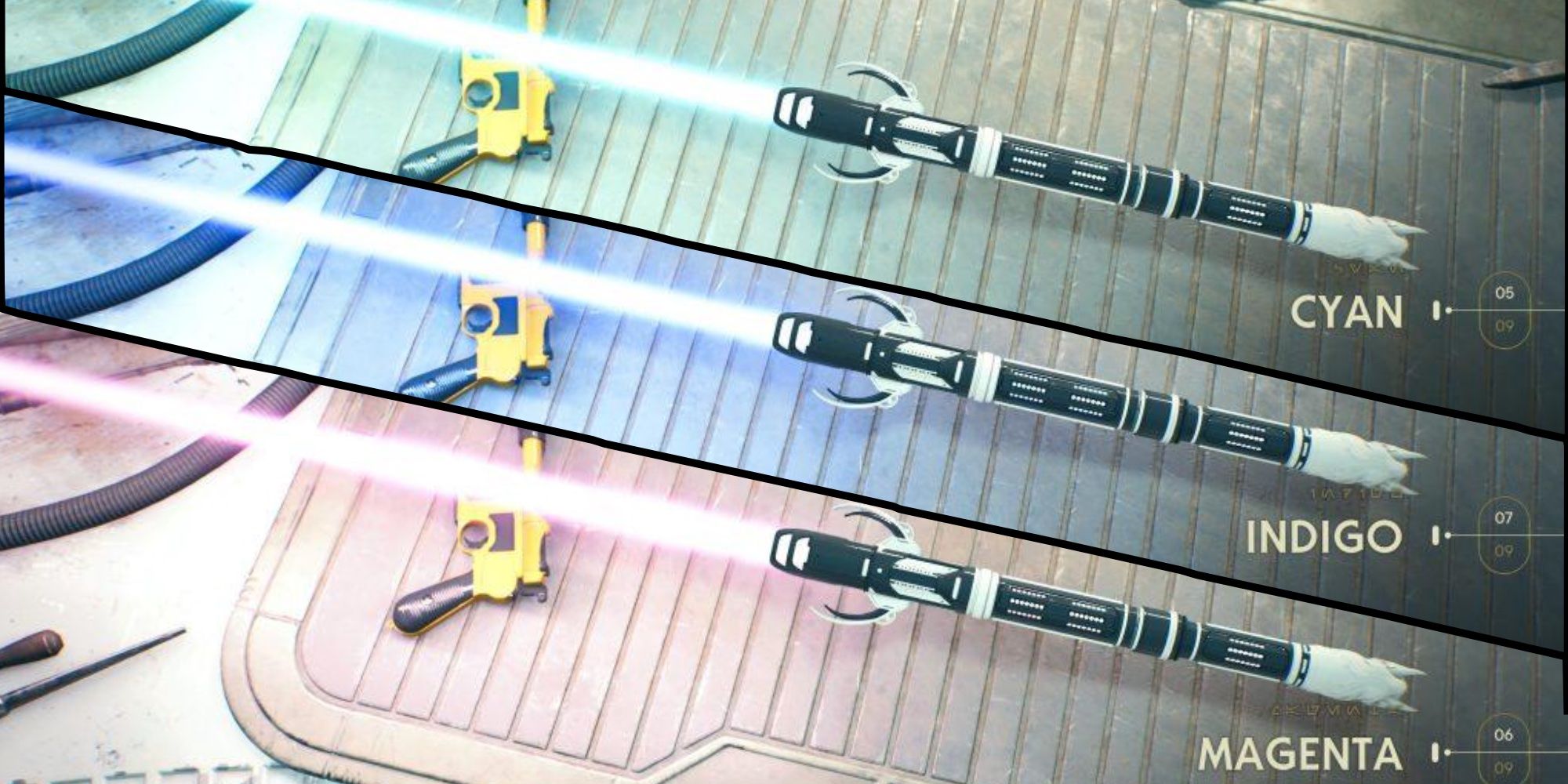Summary
- Lightsabers hold deep meaning in Star Wars canon, with various colors symbolizing different traits and affiliations.
- The presence of lightsaber colors beyond Jedi and Sith includes unique weapons like the Mandalorian Darksaber.
- Rare kyber crystals determine lightsaber colors, with newer additions like orange expanding diversity.
While the most common lightsaber colors in Star Wars are blue, red, and green, the franchise has a variety of hues for these weapons across film, TV, video games, comics, and novels. Like most objects from George Lucas' galaxy far, far away, the different lightsaber colors are imbued with a deep meaning in Star Wars. There are dozens of different Star Wars lightsaber types beyond the standard "laser sword" made popular in 1977, from Darth Maul's double-bladed lightsaber to the Inquisitors' spinning blades in Obi-Wan Kenobi. A lightsaber's color and design matter, as Star Wars canon has repeatedly made evident.
Disney+ TV shows have expanded the presence of lightsaber weaponry, and not all colors belong to the Jedi or the Sith. The Mandalorian's Darksaber is a black lightsaber and is sacred to Mandalorians despite not being Force users. Though the Darksaber's appearance differentiates it from all lightsaber colors, it also features a plasma blade powered by a kyber crystal, which are responsible for the different lightsaber colors in Star Wars. They're rare, force-attuned crystals that can be found throughout the galaxy, imbuing Star Wars’ iconic lightsabers with their various colors, which could be further explored in upcoming Star Wars movies.
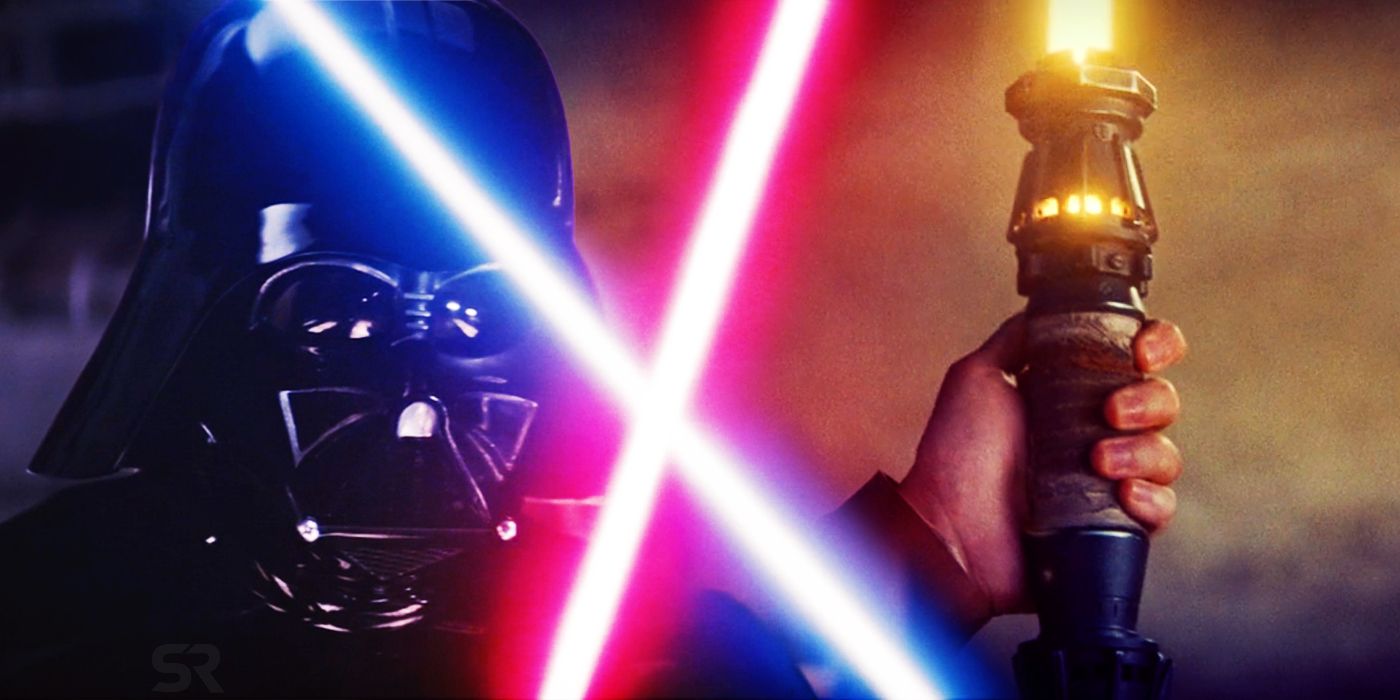
9 Ways Lightsabers Changed After The Original Star Wars Trilogy
From shapes to colors, here’s how Star Wars’ lightsabers have changed since the original trilogy thanks to Legends, prequels, and Disney canon.9 Blue Lightsaber
First canon appearance: Star Wars (1977)
Of all lightsaber colors, blue lightsabers are the most recognizable lightsaber color in Star Wars. Blue lightsabers — along with their spiritual opposite, red lightsabers — made their debut in the first Star Wars movie, with this color being immediately associated not just with heroes like Luke Skywalker and Obi-Wan Kenobi, but with the Jedi Order itself. While blue was not the only color used by the knights of old, it was certainly the most common one. This is evident by the abundance of blue lightsaber-wielding Jedi in the prequel trilogy, with the color dating back to Star Wars' very first lightsabers.
Blue lightsabers are said to represent righteousness and bravery, mostly by association with what the Jedi stand for, as well as the user's strong “spiritual alignment” with the crystal. This color was used by characters like Obi-Wan Kenobi, Anakin Skywalker, Luke Skywalker, and Count Dooku (before he fell to the Dark Side). In Star Wars Legends, this color is designated to a Jedi Guardian, once again mirroring the Star Wars prequel trilogy.
8 Green Lightsaber
First canon appearance: Return of the Jedi
Green lightsabers are the second most common color used by the Jedi, with this color being closely associated with the attributes of harmony, helpfulness, cooperation, spirituality, and demonstrable goodwill. Canonically, the green lightsaber is commonly used by wiser, senior Jedi, such as Yoda, Qui-Gon Jinn, and Luke Skywalker before the sequels. In Star Wars Legends, green lightsabers designate a Jedi Consular, but this fact hasn't been alluded to heavily in Disney's canon. A Jedi Consular is a Jedi more devoted to the mental aspects of the Force than lightsaber combat.
7 Purple Lightsaber
First canon appearance: Star Wars: Episode II - Attack of the Clones
The purple lightsaber is synonymous with Jedi Master Mace Windu. Mace Windu's purple lightsaber was a request made directly to Lucas by Samuel L. Jackson, whose favorite color is purple. As such, there’s no hidden meaning to this rare lightsaber within the canon Star Wars universe. However, Star Wars Legends stories link a purple lightsaber with moral ambiguity, uncertainty, and reconstruction, as purple is a combination of red and blue.
The purple lightsaber represents that its user shows an affinity with both the light and dark sides of the Force.
The purple lightsaber represents that its user shows an affinity with both the light and dark sides of the Force. Mace Windu’s purple lightsaber first appeared in Star Wars: Episode II – Attack of the Clones and was lost when it fell out a window in Star Wars: Episode III – Revenge of the Sith. This is one of the rarest lightsaber colors, but Star Wars: The High Republic has implied it was once more common with purple Kyber crystals represented on a Kyber Arch in honor of fallen Jedi at the temple on Coruscant.
6 Yellow Lightsaber
First canon appearance: Star Wars: The Clone Wars season 5, episode 20 "The Wrong Jedi"
This color is almost exclusively used by Jedi Temple guards, who carry double-bladed yellow lightsaber pikes. Little is known about this particular lightsaber color, so whether these are made intentionally yellow to distinguish the guards, or the crystal chooses the temple guards by turning yellow is currently unclear. Other characters such as Asajj Ventress and Ahsoka have also wielded this lightsaber color at some point. Most notably, Rey Skywalker wields a yellow lightsaber after defeating Palpatine at the end of Star Wars: The Rise of Skywalker.
In Star Wars Legends, yellow lightsabers are used by Jedi Sentinels. When the ancient Jedi Jaden Korr purified a red lightsaber crystal, it turned yellow, which perhaps indicates a pious nature within its user. Before Samuel L. Jackson powered up Mace Windu's purple blade in 2002's Attack of the Clones, yellow lightsabers were one of the first non-green, red, or blue sabers seen on-screen thanks to the 2000 PS1 game Jedi Power Battles, which included Plo Koon wielding a yellow lightsaber.
5 Orange Lightsaber
First canon appearance: Star Wars: Master & Apprentice (2019)
A newer edition to Star Wars canon is the orange lightsaber, which features as an option in the Star Wars Jedi games. Obi-Wan Kenobi became the first canon character to wield an orange lightsaber in Star Wars: Master and Apprentice by Claudia Gray, where he temporarily replaced his blue kyber crystal with an orange kohlen crystal. Orange lightsabers were wielded by Baylan Skoll and Shin Hati in Ahsoka, though not much was revealed about what orange lightsabers signify in the wider Star Wars canon. In Star Wars Legends, orange blades were sometimes been used by the Sith and dark-aligned Jedi.
4 White Lightsaber
First canon appearance: Star Wars Rebels season 2, episode 10 "The Future of the Force"
White lightsabers were primarily used by Ahsoka Tano and are proof of her mastery of the Force. Ahsoka retrieved these special kyber crystals from the lightsaber of an Inquisitor she killed shortly after Order 66. These originally emitted a red blade, but Ahsoka purified them with the Force and restored them to a white color, representing her status as an autonomous individual. She was no longer affiliated with the Jedi and had no affinity for the dark side. These new white crystals were used by Ahsoka in two lightsabers throughout Rebels and Ahsoka.
3 Red Lightsaber
First canon appearance: Star Wars (1977)
Of all lightsaber colors, it is the red lightsabers that represent the Sith and the dark side. Unlike the Jedi, who share a connection with their Kyber crystals, the Sith are unable to forge this unseen bond and thus have to steal their kybers or employ other methods to build their lightsabers. The process is known as “bleeding” and consists of pouring all their hate, fear, and other negative emotions into the crystal, causing it to “bleed” and turn red.
Conversely, in Star Wars Legends, the Sith similarly couldn’t use Kyber crystals for their lightsabers. This led to them crafting synthetic kybers which also turned out to be red. This color has been used mostly by the Sith across Star Wars’ vast array of canon and Legends stories, as seen with Darth Vader, Count Dooku, Darth Sidious, Kylo Ren, and of course, Darth Maul's infamous double-bladed lightsaber.
2 Darksaber (Black Lightsaber)
First canon appearance: Star Wars: The Clone Wars season 2, episode 12 "The Mandalore Plot"
Introduced in Star Wars: The Clone Wars in 2010, the Darksaber has become an integral weapon and plot point in Star Wars canon. The Darksaber is a one-of-a-kind blade created several centuries before the Skywalker Saga by Tarre Vizsla, the first Mandalorian Jedi. Since its first appearance, the Darksaber has appeared in several Star Wars projects from Disney, including Star Wars: Rebels. Yet its most notable use is its live-action debut in The Mandalorian. Despite being a uniquely colored lightsaber, the Darksaber commands the respect of all Mandalorians.
Several characters have wielded the Darksaber since its introduction into Star Wars canon. Aside from Mandalorians who have wielded the blade like Din Djarin, Bo-Katan Kryze, and Sabine Wren, non-Mandalorians like Moff Gideon and Darth Maul have also wielded the saber. In The Mandalorian season 3 finale, Bo-Katan Kryze became the final wielder of the Darksaber after Moff Gideon crushed it using his Mandalorian-inspired armor.
1 Star Wars Jedi: Survivor Colors
Players have many options to choose from
In addition to featuring most of the standard colors, the game Star Wars Jedi: Survivor also includes three new canon lightsaber colors for Cal Kestis to choose from. These are cyan, indigo, and magenta. Not much is known about the canon significance of these colors or what they mean for their wielders. Cyan and indigo seem to be derivatives of the standard blue lightsaber, whereas magenta is reminiscent of Mace Windu's purple blade. Nevertheless, now that these colors have been introduced to Star Wars, the door is open for Disney to fill in their meaning in future Star Wars installments.


